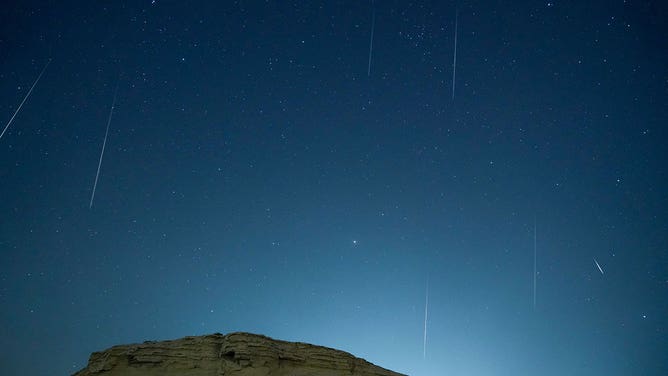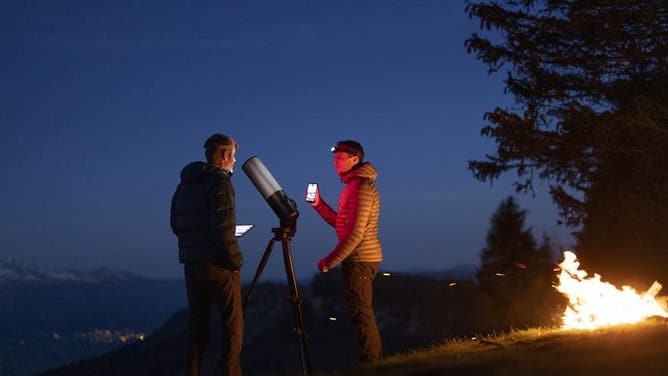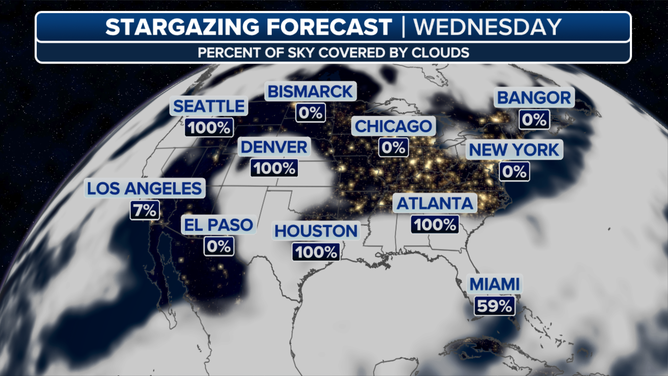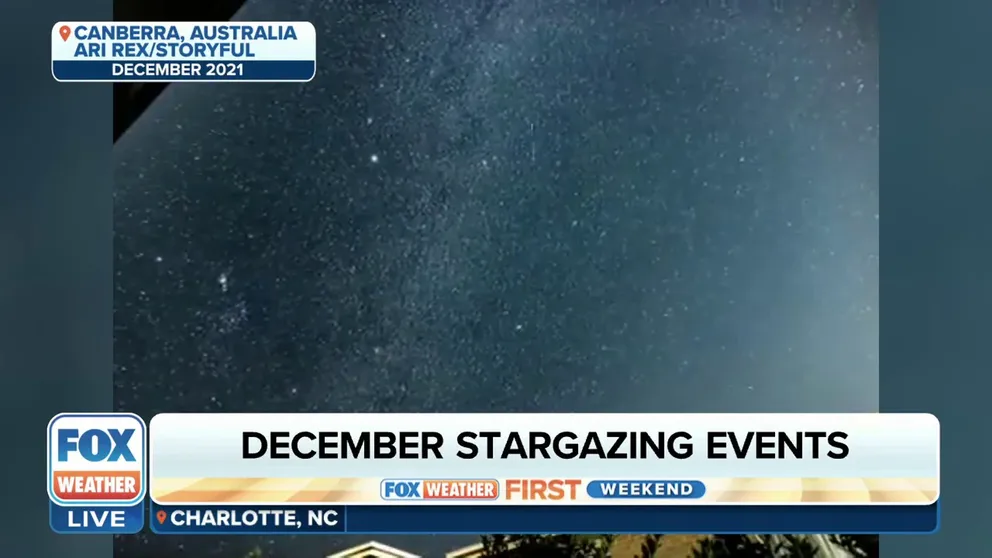Geminid meteor shower peaks Wednesday thanks to this puzzling asteroid
The Geminid meteor shower peak is Dec. 13-14 this year. A waxing crescent Moon will allow for better viewing conditions for stargazers to spot meteors, but cloud cover may obscure the view for some across the U.S.
December stargazing events to look up for
The final full Moon of the year happens near Christmas and the Geminid Meteor Shower peak closes out 2023.
The Geminid meteor shower, one of the best meteor showers of the year, happens in December when Earth passes through the particles and pieces of asteroid 3200 Phaethon.
According to NASA, the Geminids are one of the few meteor showers associated with an asteroid rather than a comet. However, 3200 Phaethon is an odd object that astronomers are still trying to define.
Astronomers say Phaethon acts like a comet because it brightens and forms a tail when it's closest to the Sun, but a study published in April shows the asteroid's tail is unusual. Phaethon's tail isn't dusty like a comet; it's made of sodium gas. It's also unusual because most asteroids do not form tails on approach to the Sun, according to NASA.
One big question remains: If Phaethon does not shed dust like comets, how does it supply the material for the Geminid meteor shower? An upcoming Japanese spacecraft mission called DESTINY+ may help answer this question during its flyby of the asteroid.
NASA said 3200 Phaethon could possibly be a "dead comet" or a new kind of object called a "rock comet." For now, it's classified as an asteroid.
DECEMBER STARGAZING GUIDE: GEMINID METEORS, CHRISTMAS FULL MOON AND STAR-MOON PAIRINGS

A meteor streaks across the night sky in Bazhou, Xinjiang Province, China, in the early morning of December 14, 2021.
(Xue Bing / Costfoto / Future Publishing / Getty Images)
The Geminid meteor shower happens this year from Dec. 4-17. During the peak on Dec. 13 and 14, the skies could light up with 150 meteors per hour under ideal conditions.
The name of the meteor shower comes from the Gemini constellation because the meteors appear to radiate from the constellation, but they do not originate from it.
How to see the Geminid meteor shower
A clear sky without haze and light pollution will result in optimal viewing conditions for stargazers.
To spot meteors, it’s best to have a dark sky away from city lights. When you step outside, give your eyes time to adjust to the dark. It may take up to 40 minutes.

Astronomers using a telescope.
(Unistellar / FOX Weather)
NASA's Gordon Johnston explains below why having a large view of the sky and giving your eyes time to adapt is also important.
"Your color-sensing cone cells are concentrated near the center of your view with more of the rod cells on the edge of your view," he writes. "Since some meteors are faint, you will tend to see more meteors from the "corner of your eye" (which is why you need to view a large part of the sky). Your color vision (cone cells) will adapt to darkness in about 10 minutes, but your more sensitive night vision rod cells will continue to improve for an hour or more (with most of the improvement in the first 35 to 45 minutes)."
During some meteor showers, the Moon can also wash out the show. For this year’s Geminids, a waxing crescent Moon on Dec. 13 won’t prevent stargazers from seeing the meteors. Between Dec. 13 and 14, only 1-3% of the Moon’s light will shine in the sky.

Wednesday night cloud cover forecast for the U.S.
(FOX Weather)
On the East Coast, the best time to start looking for Geminids is after 8:30 p.m. on Wednesday, according to NASA.
Cloud cover for most of the Pacific Northwest, Southwest, Texas and the South will obscure the view of the Geminids on Wednesday night. An upper-level low-pressure system moving across the Southwest is to blame for the cloudy conditions on Wednesday.
If you are in Chicago, New York or Los Angeles, you're in luck with mainly clear skies.
Even if you don't have cooperative weather for the peak activity, the Geminids continue through Dec. 17.
